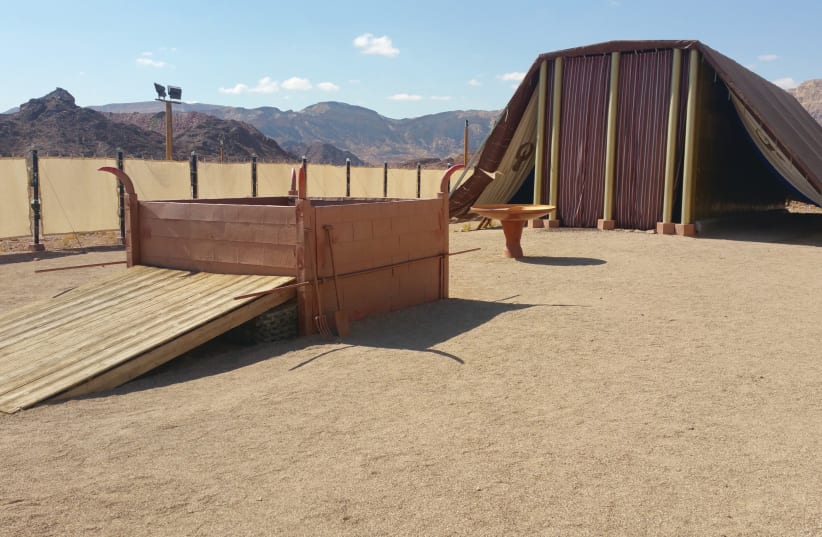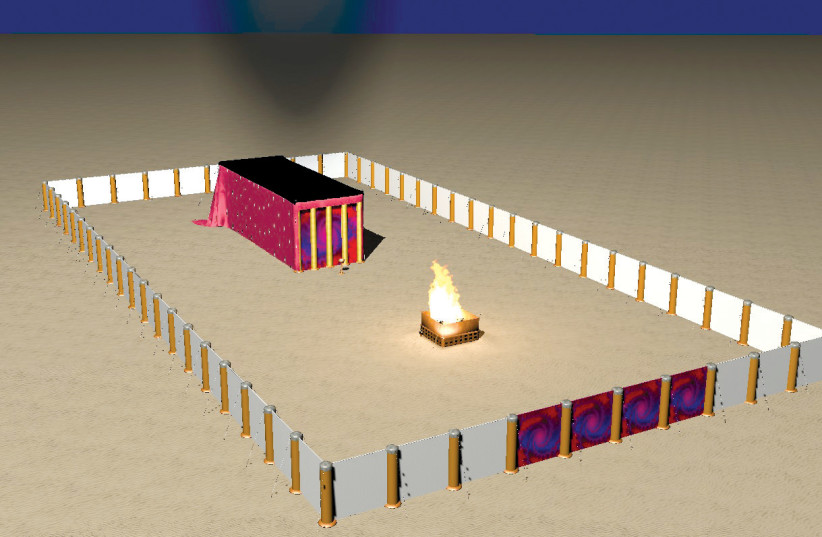Parashat Truma, which we will read on Shabbat, deals with the instructions for the construction of the Mishkan, the Tabernacle – the temporary temple that accompanied the children of Israel on their journey through the desert, and continued to exist after they entered the Land of Israel until the construction of the permanent Temple in Jerusalem in the time of King Solomon.
In the Tabernacle, as in the Temple built later, there were furnishings and objects that were used by the priests in their work: the Ark of the Covenant, which was placed in the hidden inner part of the Tabernacle, containing the two tablets of the covenant that Moses received at Mount Sinai; a small altar for incense that emitted a pleasant fragrance in the Tabernacle; the famous menorah, a relief of which is engraved on the Arch of Titus in Rome, on which the priests lit seven candles daily; a table on which the lehem hapanim, the showbread, was placed, which the priests ate every Saturday; and in the courtyard of the Tabernacle stood the large altar on which the sacrifices were offered; and a sink where the priests washed their hands and feet before going to work in the Tabernacle.
God gave precise instructions on how to build all these tools, as well as the structure of the Tabernacle itself. These instructions relate to the materials from which the Tabernacle and its vessels were made and to the size in which they should be made.
Thus, for example, the dimensions of the ark are two-and-a-half amot long by one-and-a-half amot wide and one-and-a-half high (an ama is an ancient measure equivalent to about 45 cm.). The dimensions of the table are two amot by one-and-a-half amot. The Tabernacle itself is built of an exact number of wooden planks, each of which was one-and-a-half amot wide and 10 amot long.
The dispute around the exact measurements of the Tabernacle
These exact measurements are quoted in the Talmud in connection with an interesting dispute. Sages were divided as to whether it was “possible to reduce” or “it is impossible to reduce.” That is, whether it was possible to do things accurately or at a precise time, or whether it was impossible. This is a factual dispute that has various halachic implications. From the exact dimensions of the Tabernacle and its vessels, the Talmud seeks to prove the correctness of the opinion that “it is possible to reduce,” meaning that there is a human ability to do things precisely. If God ordered the construction of the Tabernacle and the vessels in precise dimensions, then we can infer that humans are capable of doing so accurately. This expectation is possible only if man can do precise things. So, we have proof that this ability exists and “can be reduced.”
“Come and hear a proof from the measurements of the vessels and from the measurements of the altar of the Temple.”
The Talmud
To this proof, the Talmud responds with the following words: “Come and hear a proof from the measurements of the vessels and from the measurements of the altar of the Temple.” Since the Torah gives precise measurements for them, this indicates that it is possible to measure precisely. The Gemara rejects this proof as well: It is different there, as the Merciful One says: Do it, and to whatever extent you can fulfill His directives, this finds favor in His eyes, as the verse states: “All this in writing, as the Lord has made me wise by His hand upon me, even all the works of this pattern” (Bechorot 17). That is, it is different when God said “do” and man is obliged to do the best he can, and his actions are desirable before God, even if he was unable to do things accurately.
These words teach us two important principles. One: God does not expect man to do things that he cannot do. If there is any instruction, commandment or prohibition directed to man, this is proof that this is within the scope of his ability. In exceptional cases, a person really cannot do the mitzvah. The Talmudic rule states that when there is something that a person cannot do, God exempts him from the act. Of course, this is not a sweeping exemption. The person should carefully consider his ability, get advice, and look for solutions. However, when a person is truly prevented from fulfilling the mitzvah, he is exempt from it.
The second principle stems from the first and is equally important. Even when Halacha gives us exact instructions regarding a particular act, if we have tried and succeeded in it only partially, our actions are desirable before God. There is no perfectionist expectation in Judaism that man will always be able to do things accurately. The will and the effort are what are important; and when the person wants and tries to do something right, it is appreciated, even if the results are partial.
This is because God seeks man’s heart, his will, and his willingness to make sacrifices and invest effort. Even partial results are considered sufficient when they are based on a sincere desire to do the right thing. ■
The writer is rabbi of the Western Wall and the holy sites.

